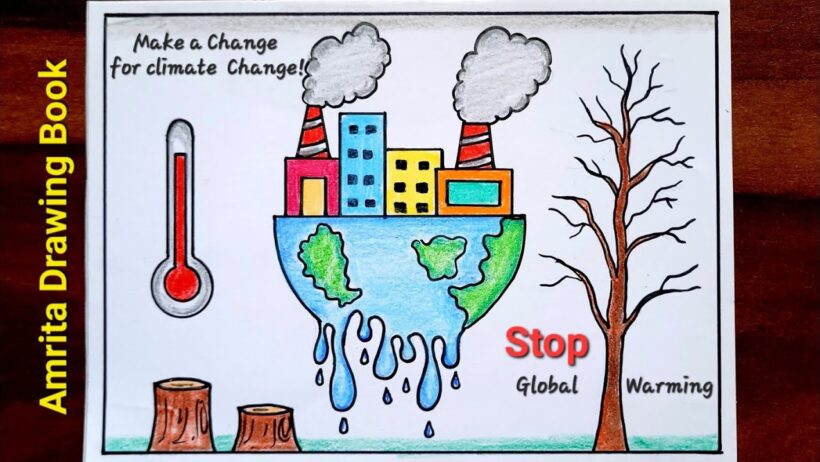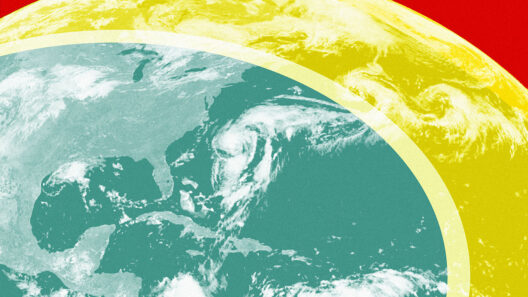Overpopulation is increasingly becoming a pressing concern as we teeter on the brink of environmental collapse. As of now, the global population exceeds 8 billion, and projections indicate that this figure could climb to nearly 10 billion by 2050. This exponential growth presents myriad challenges, most notably its profound implications for climate change. Could it be that our human abundance is contributing to the overheated planet we inhabit? One may wonder: if we are to successfully combat climate change, must we also address the escalating number of mouths to feed, footprints to match, and carbon to emit?
The nexus between overpopulation and global warming can be articulated through the perspective of environmental impact. Each additional person on the planet does not merely add to the population count; they also contribute to the consumption of resources, the emission of greenhouse gases, and the degradation of ecosystems. When we consider energy production, transportation, waste generation, and food consumption, the arithmetic of this relationship becomes painfully clear. Not only are we straining the Earth’s capabilities, but we are also accelerating the rate at which we approach planetary limits.
To illustrate this, let us ponder the concept of the ecological footprint—the measure of human demand on the Earth’s ecosystems. In regions where population density is notably high, such as cities, the impact becomes more pronounced. Urban areas often experience a unique set of environmental pressures due to high concentration of people. These pressures include increased energy consumption for heating, cooling, and transportation, leading to spikes in fossil fuel usage. High-density living magnifies the strain on energy grids, prompting reliance on non-renewable energy sources that emit significant amounts of carbon dioxide into the atmosphere.
Delving deeper into the statistics, it becomes clear that the disparities in birth rates across the globe also play a pivotal role. Developing nations often exhibit higher fertility rates compared to developed countries. The industrialized world, while contributing a greater share of historical emissions, sees lower growth rates. This trend creates a paradox: as populations grow in developing areas, associated carbon emissions escalate, although these nations bear the brunt of the climatic consequences despite contributing relatively lower emissions on a per capita basis. This phenomenon leads to a cyclical problem of climate injustice, where those least responsible for environmental degradation are often the ones most adversely affected by its impacts.
The ramifications of increased population go beyond mere consumption. Urban sprawl is a direct consequence of population growth, as cities expand to accommodate rising numbers. This expansion encroaches on natural habitats, leading to deforestation, loss of biodiversity, and disruptions in local climates. Ecosystems that have flourished over millennia are rendered vulnerable as human infrastructure takes precedence, showcasing a tragic irony: our survival can jeopardize that of countless other species.
However, the dialogue surrounding overpopulation must also consider fertility trends and the social constructs influencing them. Education and empowerment, particularly among women, are vital components in addressing growth rates. Societies that invest in education often witness reductions in birth rates as individuals gain access to reproductive rights and family planning resources. As such, the potential challenge presented is twofold: not only must we tackle the immediate consequences of a burgeoning population, but we should also advocate for systemic change to foster gender equality and access to education. How can we reshape our worldviews to understand that solving climate change may also lie in supporting global initiatives aimed at empowering women and ensuring access to education?
Moreover, food production is intricately linked to population and climate change. A growing populace demands increased agricultural output, which, if approached unsustainably, results in heightened deforestation, soil degradation, and the overuse of fertilizers. This leads to increased nitrogen oxide emissions—a potent greenhouse gas. Furthermore, factory farming contributes substantially to methane emissions, a greenhouse gas that is significantly more potent than carbon dioxide in the short term. As demand for meat rises, so too does the need for grazing land and feed crops, perpetuating a cycle of resource depletion.
Interestingly, solutions abound, yet they often remain overshadowed by inertia. Urban planning initiatives that prioritize sustainable living can reshape the very fabric of cities. Reinventing transport systems to promote public transit over personal vehicles and encouraging the use of renewable energy sources represent a starting point in this multifaceted challenge. It is crucial for individuals, communities, and nations to collaborate, sharing insights and technologies to develop sustainable solutions. Innovative practices such as vertical farming and community gardens can increase food security while reducing the carbon footprint associated with traditional agriculture.
Emphasizing the importance of sustainable practices can also extend to consumer behavior. As awareness of the implications of overpopulation spreads, individuals are beginning to recognize their personal environmental impact. This leads to the question: can we advocate for conscious consumerism that caters not only to personal desires but also to planetary sustainability? Permanent, actionable change often stems from a collective mindset that prioritizes the long-term health of the Earth over short-term conveniences.
In conclusion, overpopulation undeniably contributes to the multiple dimensions of climate change and global warming. The implications of increasing population density are extensive, encompassing resource depletion, habitat destruction, and enhanced greenhouse gas emissions. Yet amid these challenges lies an opportunity for profound change and evolution. By addressing overpopulation through education, sustainable practices, and systemic reform, society can forge a path toward a more harmonious coexistence with the planet. As stewards of Earth, the call for action is upon us—not just as individuals but as a collective force committed to reversing the damage done and fostering a sustainable future.








